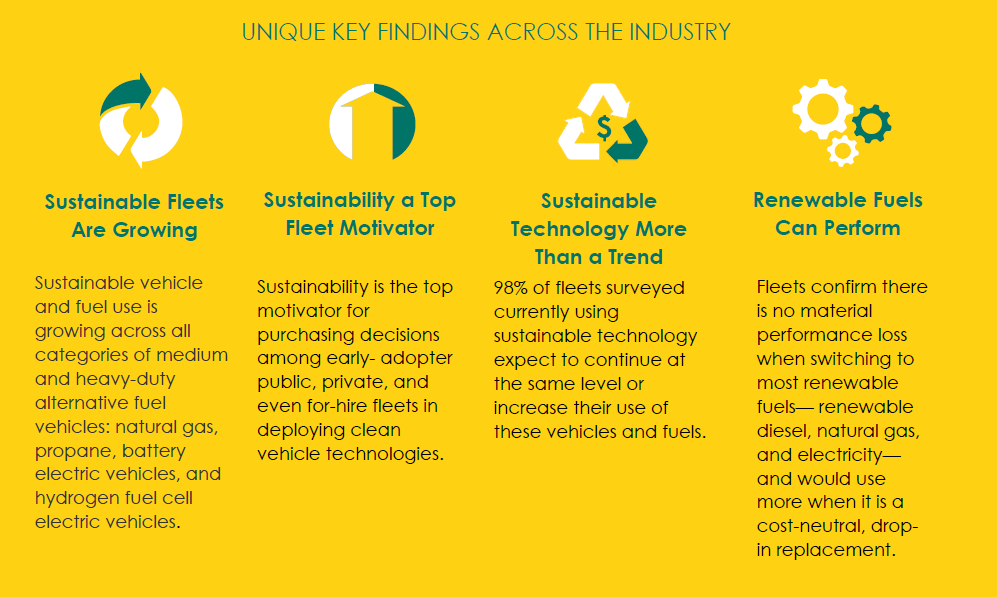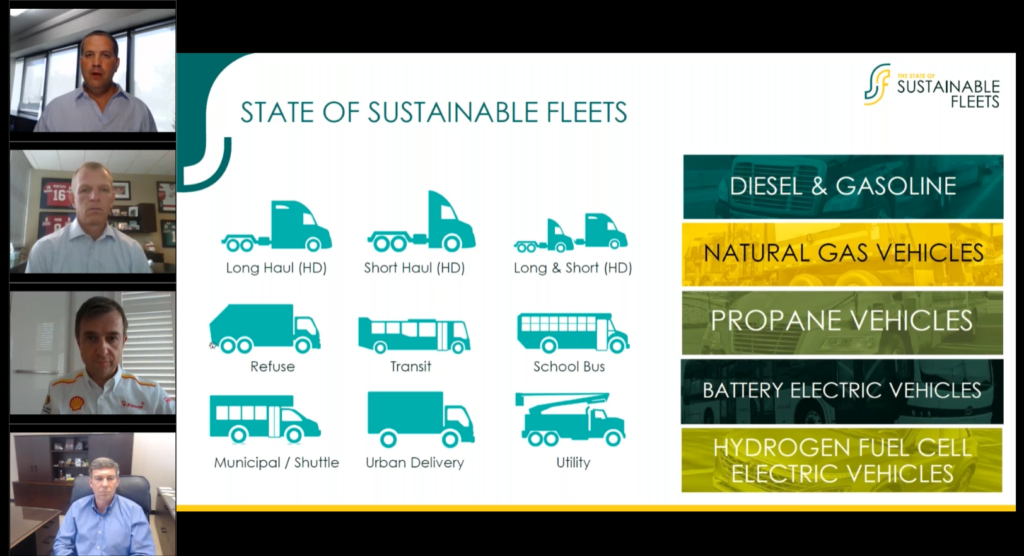First State of Sustainable Fleets report highlights efforts to reduce emissions
SANTA MONICA, Calif. – Ninety-eight per cent of fleets that have made an investment in sustainable transportation are planning to continue or increase their investments in green technologies, according to the first State of Sustainable Fleets report.
The report was authored by Gladstein, Neandross and Associates (GNA) and sponsored by Daimler Trucks North America (DTNA), Shell Oil Company, Penske Transportation Solutions and Exelon Corp. Findings were released Aug. 11 during a webinar with some 1,100 registrants. The State of Sustainable Fleets report covered nine vehicle types, ranging from diesel to hydrogen fuel cell.

Brian Cota, vice-president of sales for national accounts with Daimler Trucks North America (DTNA), said he wasn’t surprised that most surveyed fleets planned to continue their investments in sustainable technologies.
“Our customers have their own sustainability and green initiatives they want to push forward with,” he said, adding truck makers are also facing regulatory and competitive pressures to advance sustainable technologies. He said battery electric vehicles (BEVs) are the “next frontier” in clean transport technologies, but there’s still work to be done to make them economically viable in a wider range of applications. DTNA has a 30-truck innovation fleet on the road, demonstrating the potential of battery electric trucks while making actual deliveries.
Most of those trucks seeing the greatest success run 100 to 150 miles per day, but Cota said advances in battery efficiency and software management will expand the applicability of battery electric trucks. But while the future is electric, Cota added, “it’s not going to be the only technology.”
“We still anticipate for this decade, diesel will be the main player,” he added. “Customers running natural gas successfully today, I think will still run natural gas successfully in the future.”
Drew Cullen, senior vice-president of fuels and facility services with Penske, said renewable diesel is increasingly gaining the attention of fleets.
“One of the things that excites us about it, is just how clean a fuel it is and what the potential impact is to emissions control systems on vehicles,” he said, noting diesel particulate filter cleaning intervals are greatly extended when using renewable diesel. The price point, in markets where it’s widely available, has also come down to rival that of regular diesel.
“There’s a lot of interest in it. In California, it has tripled in the past several years,” he said. “It’s available now, it’s affordable, and it is a really great way to reduce your overall carbon footprint and contribute to your sustainability goals.”
To successfully deploy any new technology or alternative fuel, however, fleets must first do their homework.
“If we were teaching a class on alternative fuels and fleet adoption of different technologies, there’d be two main pieces to that class: Get yourself educated, then develop your strategy off of that,” said Cullen. “Talk to your partners, talk to others in the industry, go out and take a look at the vehicles, drive them around and understand the cost, maintenance, efficiencies, weight, range – all those different pieces that go into evaluating a vehicle and whether or not it’s a good fit for your operation.”

Daimler’s Cota added to the list of considerations: infrastructure requirements, safety training that’s needed, facility upgrades, and more. That’s why collaboration is important and why DTNA has adopted a “co-creation” strategy for its electric vehicles, working closely with customers, utilities, and other stakeholders. A collaborative approach to adopting clean energy solutions also makes them attainable for smaller fleets that may lack the resources for extensive testing.
“You need to lean on your partners,” Cullen urged small fleets. “Make sure you’re doing that educational piece, and understand the risks associated with implementing a particular type of technology and how to mitigate those risks. Know what you’re getting into before making a big commitment. That’s where organizations like Daimler and Shell and Penske can come in and really help pull our resources together.”
“I don’t see any limitations for small fleets to participate in this journey,” Cota agreed. “Reach out to our dealers that you normally interact with.”
The full report can be downloaded here.
Have your say
This is a moderated forum. Comments will no longer be published unless they are accompanied by a first and last name and a verifiable email address. (Today's Trucking will not publish or share the email address.) Profane language and content deemed to be libelous, racist, or threatening in nature will not be published under any circumstances.